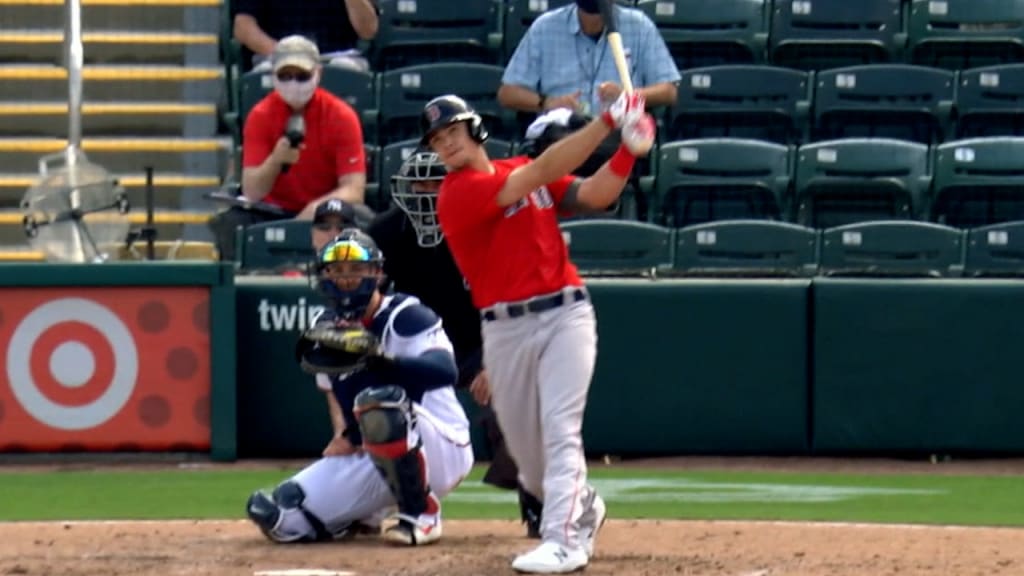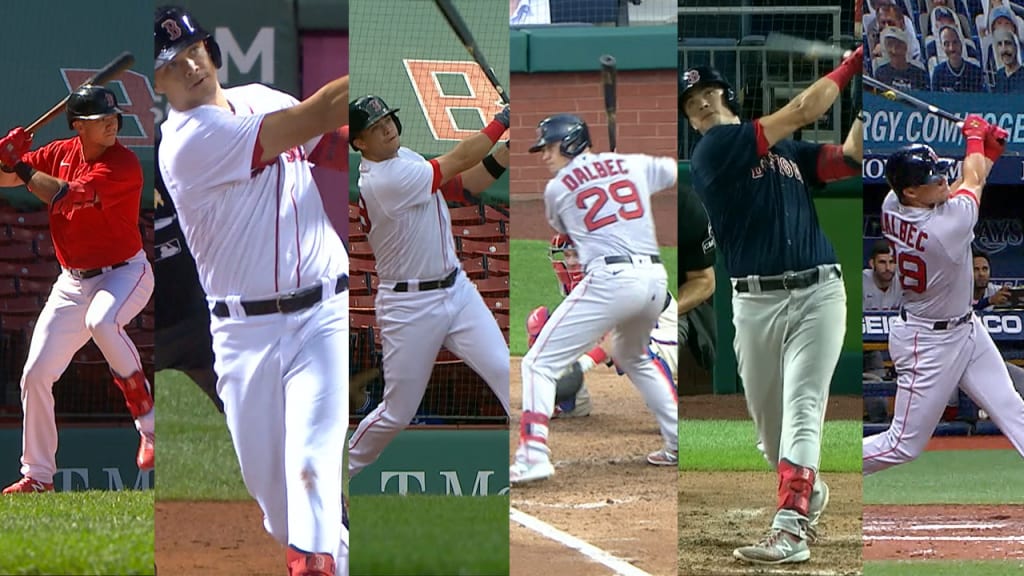This young slugger could follow Judge's lead
This browser does not support the video element.
Here are three sets of stats for two rookie right-handed power hitters, who both flashed elite home run potential -- counterbalanced by sky-high strikeout and swing-and-miss totals.
Baseline stats
Hitter 1: Age 24, 27 G, 95 PA, 4 HR, 44.2% K rate, 9.5% BB rate
Hitter 2: Age 25, 23 G, 92 PA, 8 HR, 42.4% K rate, 10.9% BB rate
Plate discipline
Hitter 1: 45.6% swing rate, 63% in-zone swing rate, 30.6% chase rate, 42.5% whiff rate
Hitter 2: 48.8% swing rate, 67.4% in-zone swing rate, 33.5% chase rate, 46.2% whiff rate
Contact quality
Hitter 1: 58.1% hard-hit rate, 32.6% sweet-spot contact, 11.6% barrel rate, 55.8% line drives/fly balls
Hitter 2: 43.9% hard-hit rate, 36.6% sweet-spot contact, 22% barrel rate, 51.2% line drives/fly balls
The first hitter is Aaron Judge -- 2016 Aaron Judge, the Aaron Judge who would go on to erupt with a rookie-record 52 home runs the next year. The second hitter is Bobby Dalbec.
This browser does not support the video element.
So what's the point? Do the Red Sox have the next Judge? That's too bold a claim to make, since Judge has proven he possesses true top-of-the-scale power. But Dalbec could blossom into the next great power hitter … if he can make the same strides Judge did as he enters his sophomore season. Dalbec's ceiling makes the slugging corner infielder, who's ranked among MLB's Top 100 prospects, an especially intriguing player to watch in 2021.
He's an extreme of high-upside, high-downside. He might hit 30-40 homers if everything goes right. Or he might never connect enough and just strike out 200 times.
Dalbec will have to make some big strides. Judge cut his strikeout rate by nearly 15 percentage points from 2016-17, he cut his chases and swings-and-misses by close to 10 percentage points, he attacked more pitches in the heart of the zone, and he took advantage of his supreme strength by driving more balls to the opposite field … the list goes on.
But there are reasons to think it could click for Dalbec, too. When you watch him, he has such easy power. He's showcasing it in Spring Training, with three home runs, all to right-center field (including one 109 mph off the bat), maybe a glimmer of his own advancing approach at the plate.
By all accounts, Dalbec is an intelligent hitter with a history of successfully making adjustments, specifically in similar instances when he's struggled with strikeouts. For example, when Dalbec first moved up to Double-A in 2018, his strikeout rate was 37.1% and his walk rate just 4.8%. But when he returned to the same level in 2019, he cut his strikeouts to 25.1% and increased his walks to 15.5%.
The Boston Globe's Alex Speier recently pointed this out about Dalbec on FanGraphs' Effectively Wild podcast, saying: "He's a really smart, really cerebral hitter. He's really aware of what he's doing at the plate, in ways that you'd like to believe translate to adaptability. … The Red Sox are pretty optimistic about his intelligence and him finding an approach to allow his power to play more frequently with less swings and misses."
If he's done it before, he can do it again. At the beginning of Spring Training, Red Sox manager Alex Cora said: "I don’t think Bobby Dalbec will be swinging and missing 40% of the time during the season. I think if you look at his career, the first part of the season, whatever league he’s at, he swings and misses a lot. But then he catches on."
This browser does not support the video element.
Cora also called Dalbec's power performance in 2020 "eye-opening." And that's the other thing. There is a real foundation for Dalbec's .600 slugging percentage and eight homers in 80 at-bats last season. Statcast's tracking data for Dalbec shows that he has the skill set of a top-tier MLB home run hitter.
Dalbec barreled 22% of his batted balls last season -- that means he hit them with both ideal exit velocity and ideal launch angle. Barrels are the highest level of contact quality; they're the balls that become home runs and extra-base hits. Even with Dalbec's limited sample, you have to take notice of a barrel rate like that -- it was the second highest in the Major Leagues, behind Miguel Sanó and just ahead of Fernando Tatis Jr.
When Judge broke out in 2017, he more than doubled his barrel rate from 11.6% (very good) to 25.7% (elite). Dalbec's underlying quality of contact is already there. Barreling up the ball consistently over a full season is a big question, but what we do know is the possibility exists. The same can't be said for most hitters, even at the big league level.
Among the other positive indicators for Dalbec: he hit two home runs harder than 110 mph, which means he can reach the upper echelon of exit velocities, an important hitting capability in itself. Dalbec was one of only 12 hitters with multiple 110-plus mph homers from the date of his MLB debut, Aug. 30, through the end of the season.
This browser does not support the video element.
And we already know the power to all fields he's showcasing in Spring Training right now is real -- he flashed it last season, too. Half of Dalbec's 2020 home runs were pulled; the other half were to the opposite field. And his other base hits were sprayed across the field, too.
Dalbec might have one of the biggest ranges in potential season outcomes of any hitter. But the Judge-ian raw power is there. So are signs of a Judge-ian breakout. That makes Dalbec a pivotal hitter for the Red Sox if they're going to exceed expectations this season.

